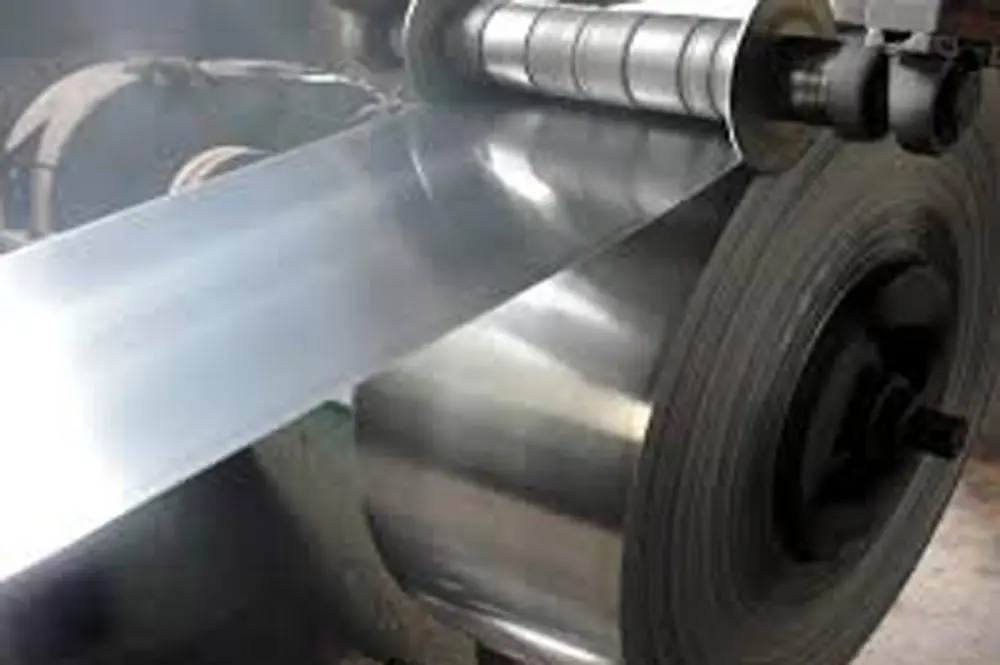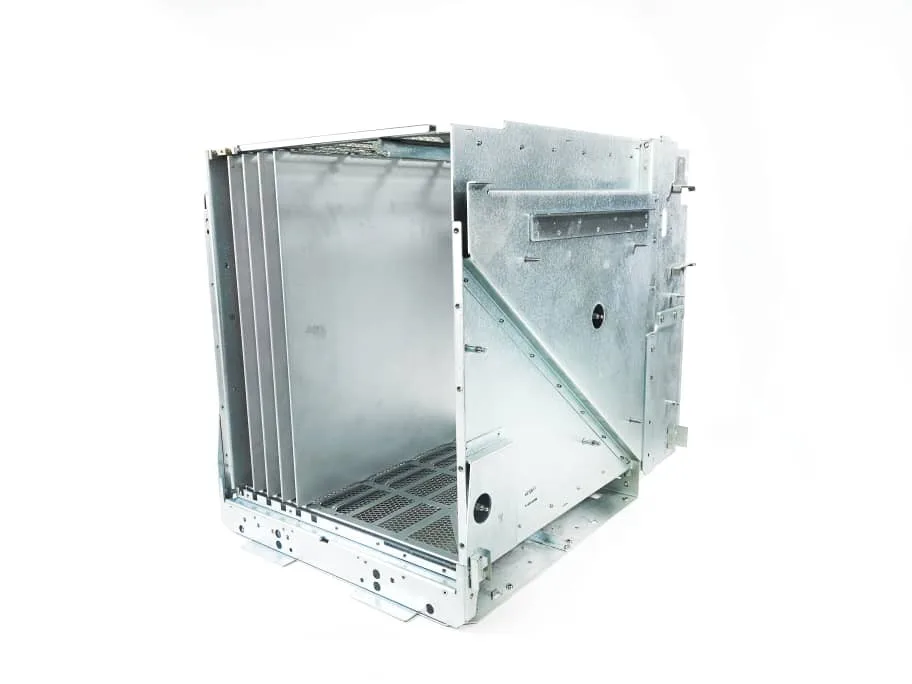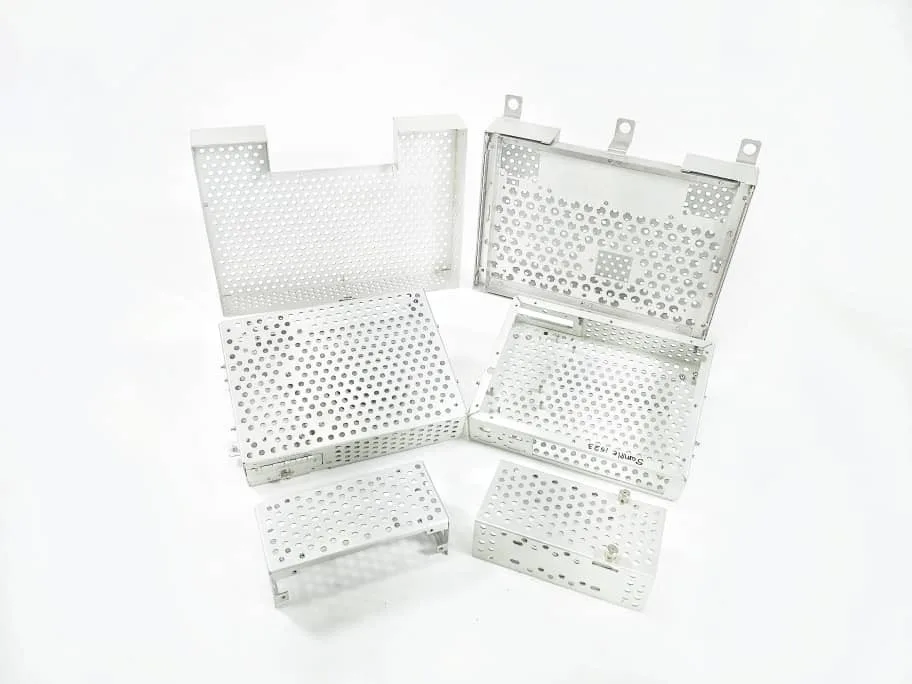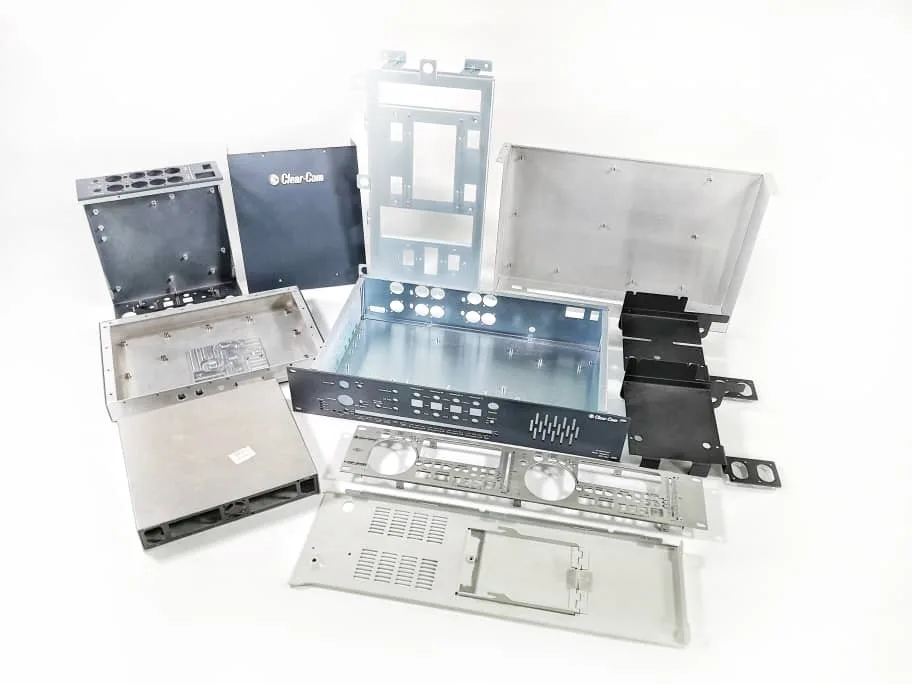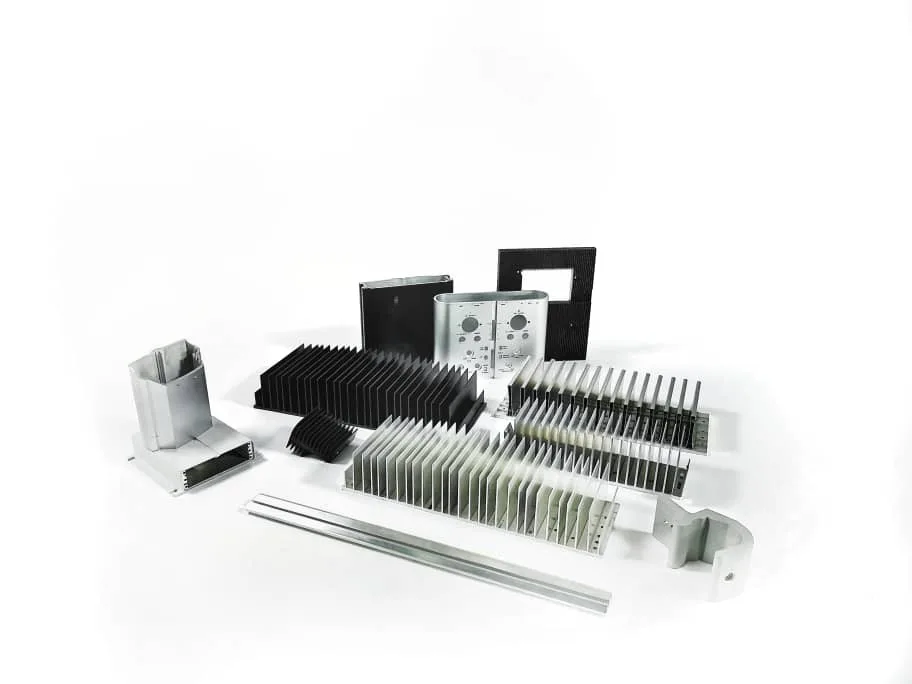Custom Sheet Metal Fabrication
Custom or precision sheet metal fabrication is an umbrella term used to describe the process of turning flat metal sheets such as aluminium or steel into the desired product. Sheet metal can be bent, stretched or cut into any shape. The process is rather complex and the right sheet metal fabrication equipment and techniques needs to be used to achieve the best results.
Sheet Metal Fabrication Tools and Equipment
Precision sheet metal fabrication is reliant on special tools and equipment that cut, bend and force metal into the desired shape. CNC machines have also become a popular tool in this process as they are very precise and cost effective.
Sheet Metal Fabrication: A Complete Guide
The cutting process often involves the following tools:
- Chop Saws
- Band Saws
- Miter Saws
- Cutting Torches
The forming processes utilize tools and equipment such as:
- Oxy-acetylene Torches
- Hydraulic Brakes
- Rolling Machines
The joining process usually involves:
- Welding Equipment and Techniques
- Rivet Guns
- Brazing Equipment
Sheet Metal Fabrication Process
Sheet metal fabrication usually involves the three main processes: Forming, cutting and joining.
Forming
Forming refers to the reshaping of the sheet metal. It includes processes:
- Stamping - the metal is pressed into the desired shape by using two dies.
- Bending - this can be done manually by hand or by press brakes.
- Stretching - the metal is pulled using a stretcher, or an English wheel
- Roll forming - the metal sheet is put through a pair of rollers, usually to form a coiled shape.
Cutting
Cutting can be divided into two categories:
- Shear cutting- less precise technique which includes processes such as basic cutting, shearing and blanking. Utilised for nonindustrial end products.
- Non-shear cutting includes waterjet cutting, laser cutting, plasma, milling machines and lathe machines. The accuracy of non-shear cutting makes it most appropriate for industrial products that require high precision, such as automotive or aeronautical parts.
Joining
Joining services
also include:
- Joining processes that involve techniques such as welding, and brazing. Rivets and adhesives are also used to join sheets of metal together.
- Finish processes such as sandblasting, deburring and coating are carried out to enhance the properties of the finished products.
EKO Industries is a sheet metal company based in Malaysia that serves a worldwide customer base in Southeast Asia, Asia, and worldwide by providing custom sheet metal fabrication services. We follow a continuous improvement strategy and invest in the latest manufacturing and production technologies and capacity to ensure that our precision sheet metal fabrication processes are up to date. Our machineries that support this aim are as follows:
Advance CNC Laser Cut
In laser cutting, a focused light beam is used to cut through the sheet metal. Laser cutting can also be used to engrave a desired design on the sheet metal.
- Amada AF4000i-B Laser Cutting with additional tube cutting device.
- The quality of the edge can be mirror smooth and a precision of around 0.1 mm (0.0039 in) can be obtained.
Press Break
Our press break machine bends the sheet metal into the desired shape. This is accomplished by clamping the metal in between a punch and a die.
- Amada RG -35 ton
- Amada RG100 ton
- HDP160 ton
CNC Turret Punch
Also known as a turret press, the turret punch is a machine that punches through a piece of metal. It can be used to create holes of different diameters in the metal. A CNC turret punch movements follow a pre-programmed software, making it incredibly precise.
- CENTRUM 2500
Metal Stamping
In metal stamping, flat metal sheets are formed in specific shapes. This process can include several forming techniques such as punching, bending and blanking.
- Stamping machine range from 10 ton - 110 ton
Extrusion
EKO Industries also supplies extrusion parts to our customers to meet our customers’ specific needs. We aim to add value to what we offer with services such as sawing process, punching and CNC machining operations. Our final finishings such as powder coating and anodizing in a wide range of colors and finishes work to enhance the product.

Frequently Asked Questions About Sheet Metal Fabrication
Sheet metal fabrication is the manufacturing of metal parts using the three main techniques of forming, cutting, and joining. Sheet metal fabrication typically requires specialized equipment such as the CNC Laser Cutters and CNC Turret Punches used at EKO Industries. Whereas sheet metal stamping can refer to a range of techniques including stamping, bending, and pressing existing flat metal sheets to create a final product. We provide custom sheet metal fabrication services and are manufacturers in precision sheet metal fabricating equipment to suit our customers’ need and to aid sheet metal assembly.
Precision sheet metal fabrication companies use computer numerical control machines (or CNC machines) programmed with computer software to direct the movement of factory tools and machinery during the sheet metal fabrication process. This enables us to automate our manufacturing processes while still ensuring precision and accuracy. We offer value-added services including CNC machining operations to enhance the final standard of the finished product. Find out more about CNC machines in our blog post.
Sheet metal fabrication is a flexible process that can have applications across a variety of industries. Selected industries using sheet metal fabrication include medical equipment, automotives, shipbuilding, construction, electronics, and consumer goods. Find out more about sheet metal fabrication in our blog post or reach out to us for a quote today.
Sheet metal fabrication has undoubtedly become a vital part of the modern-day engineering industry. This process is used almost everywhere from simple workshops to mammoth-sized manufacturing plans.
In the 21st century, sheet metal plays a vital role in the engineering industry. If we look around, we can see it being used almost everywhere from cars, kitchen sinks, furniture, aeroplanes etc. Additionally, it plays a crucial role in the designing sector to test various designs and their effectiveness.
What is sheet metal fabrication?
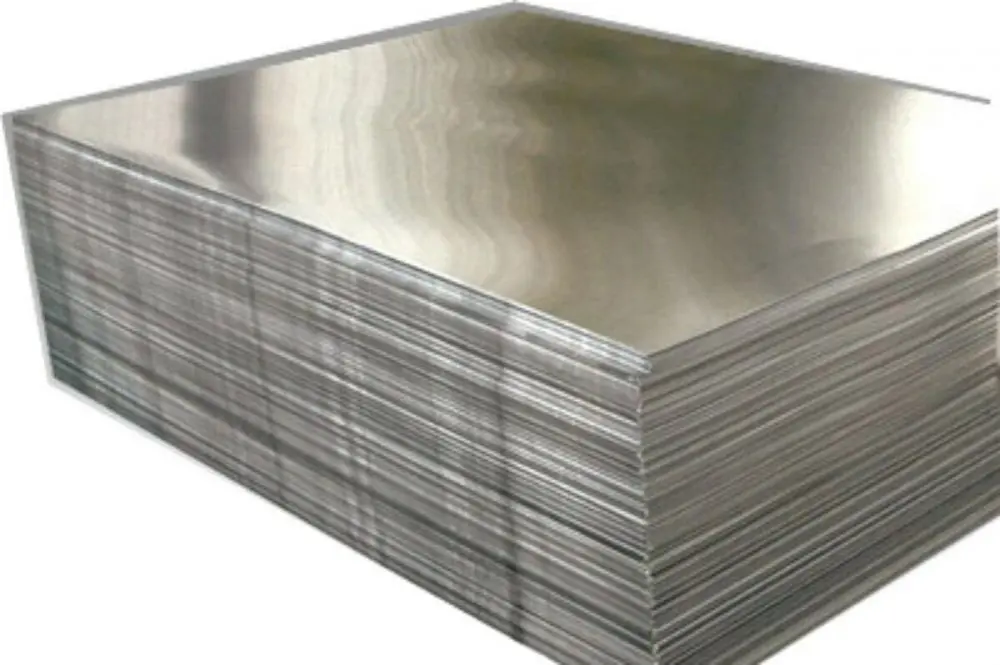
Sheet metal fabrication is a manufacturing technique in which flat and thin pieces of metals are transformed into shapes by using a variety of techniques such as cutting, stamping, punching and bending.
The design possibilities of sheet metal fabrication are almost infinite, which allows a broad range of products to be produced. The process is undertaken using special equipment such as chop saws, cutting torches, welding equipment etc.
Sheet Metal Fabrication Tools
This industrial process uses a special set of tools for forming, cutting and joining techniques to make sure that the metal gets into the desired shape.
Sheet metal fabrication involves a variety of tools depending on the specific purpose in hand.
However, after the revolution of CNC (Computer Numerically Controlled) technology, it became possible to perform almost all sheet metal operations with CNC.

These are computer-controlled machines that can mimic almost several cutting tools that are required for sheet metal fabrication. The designer will load the CAD file, which will be converted into a CNC file by the software program.
The machine fabricates as per the instruction fed into its central computer.
CNC machines have gained enormous popularity for their precision and reducing the labour cost.
Some of the most common tools used for sheet metal fabrication are
- Hole Cutters/Drillers: These are used to create holes on concrete substrates or metal alloys. Usually, the drillers will be equipped to cut holes of different sizes.
- Planishing Hammers: Planishing hammers are used to give gentle blows to the smooth metal that has already been formed by some other means.
- Multi-Press: As the name suggests, a multi-press features three machines in one. i.e. shoulder press, bench press and incline press. The users can adjust the seat and press arm for various requirements.
- Flange and Punch Tools: This is used to make clean and quick holes in the sheet metals. A variety of Punch and Flange tools are used for auto body repair and other fabrication methods.
- Corner Notcher for sheet metal: This is used for creating crisp corners. A sheet metal corner notcher is a machine that is designed to cut a 90-degree section with a V-shaped blade. The notcher is hydraulically powered and can form even minute cuts from 1mm up to 120mm in a single operation.
Bending tools, notchers, louvre tools are used for various bending purposes.
- English Wheels: These are used for light applications and heavy-duty constructions as well. One important feature of English wheels is that the quick release lower anvil wheels allows 90-degree rotation, beneficial for creating odd parts.
Types of sheet metal fabrications
Sheet metal fabrication techniques are broadly classified into three:
1. Cutting
In a broader sense, CNC cutting can be classified into two, i.e. cutting with shear and cutting without shear.
The process of cutting without shear is used for non-industrial products which require better precision, while sheer cutting is used for industrial products.
Sheer cutting includes processes such as cutting, blanking and shearing.
- Cutting: Removing one specific portion of the metal by using a blade
- Shearing: This is a more advanced form of cutting. Here a large portion of metal is cut out from a continuous sheet. This action is somewhat similar to that of scissors in which the lower blade remains fixed while the movable upper blade performs the cut.
- Blanking: In this process, a metal workpiece will be removed from a primary metal strip when it is punched.
- Non-sheer cutting: This is done to get accurate dimensions. The process is usually done for specific industry products such as computer parts, aeroplane wings etc.
- Laser cutting: This process is very accurate and uses a very high beam laser to cut through the metal.
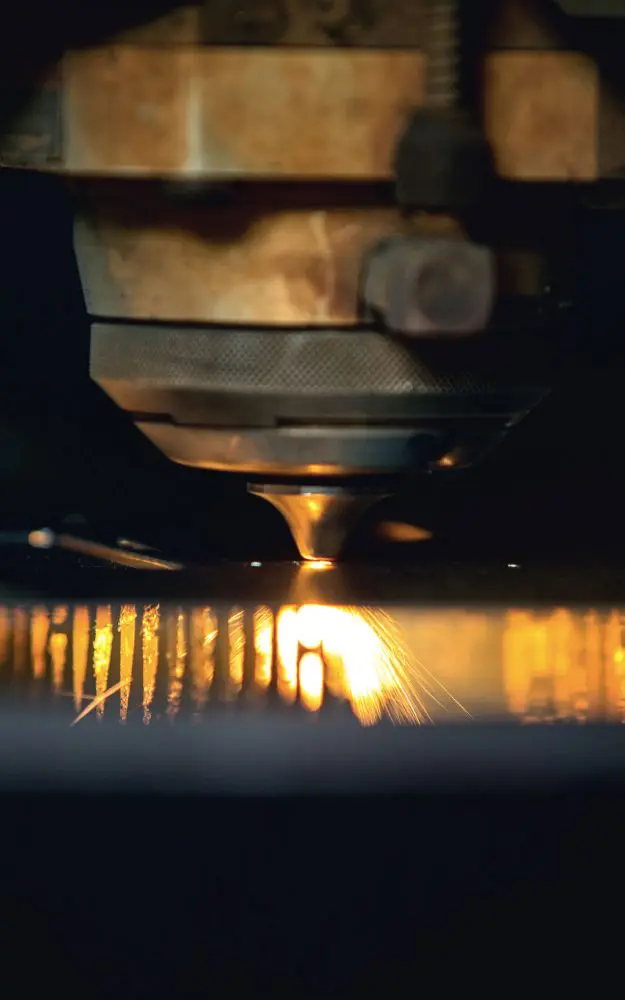
- Plasma cutting: This process involves the use of compressed gases such as hydrogen and nitrogen to produce a high beam plasma laser for cutting purpose.
- Water jet cutting: This process used high speed and pressurised water mixed with abrasives to cut through metals.
- Machining: This includes processes like spinning and milling, where a lathe blade or drill bit is used to cut off pieces of material.
2. Forming
The process of forming is used in manufacturing industries where the material undergoes plastic deformation to acquire different size and shape for various purposes.
Unlike cutting, in this process, no metal is removed but displaced or deformed to get the desired shape.
- Bending: Usually done by hand or press brakes.
- Stretching: The metal is pulled apart by using a dolly, hammer or English wheel.
- Roll forming: This process has a similar effect to that of bending. In roll-forming, a continuous sheet of metal is rolled to achieve the desired shape. The rolling is made possible with the help of mechanical rollers.
- Stamping: In this process, a flat sheet of metal either in the form of a blank or coil is placed into a stamping press. Within the press, a tool or die forces itself into the metal to form the desired shape. Punching, blanking, bending, coining are examples of stamping techniques.
3. Joining
In this method, two different metal pieces are joined together using a variety of techniques as mentioned below:
- Welding: In this process, two pieces of metals are joined together by using high heat to melt the parts together and join them. This is quite distinct from other joining techniques such as brazing and soldering, where the base metal does not melt.
- Brazing: Here, joining is done by a metal filler rather than melting the two metals.
- Riveting: Here, small metal parts are joined by embedding them through sheets.
- Adhesive: Metal sheets are joined together either alone or by using another joining method.
Advantages of sheet metal fabrication
Following are some notable advantages that the process offers:
- Highly resistant to corrosion from the intense heat of the sun, moisture and other harmful chemicals. The process is ideal in today’s environment when the metals are exposed to toxic chemicals present in the atmosphere.
- High strength and long-lasting.
- Less weight: Sheet metals are easy to carry around.
- Durability: The sheet metals are strong and could withstand high pressures.
- Malleability: The metals can be transformed into almost any shape. This technique gives limitless capability while constructing structures and buildings.
- Recyclable: The sheet metals can easily be recycled after use and leaves a very less carbon footprint.
- Widespread availability.
- Cost-effective: The widespread availability of high-quality sheet metals and metal fabrication helps the firms, manufacturing firms and contractors to save a lot of costs, helping to reduce the overall cost of construction.
- The idea of architects and designers can be quickly materialised through sheet metal fabrication technology.
- Easy to repair: One prime advantage of using sheet metal is that repair workers can quickly inspect the damage and fix it without having much effort. The unique feature of sheet metal is that the damaged part can be removed and replaced without taking down the entire structure.
- High quality of construction: because of its durability maintaining sheet metals are easy and difficult like using other materials.
Application of sheet metal fabrication in various industries
This process is very flexible and can be used in factories for creating individual components to automotive bodies.
Sheet metal fabrication is used in a variety of industries such as consumer goods, robotics, electronics, energy sector, automotive, shipbuilding, construction and aerospace.
You might be wondering about the sheer expansiveness of the list of sectors where this is used. This is simply because sheet metal fabrication is an unavoidable element of all industries.
This technique is easier to implement when compared to other manufacturing techniques such as additive manufacturing, die casting etc.
Some of the applications of sheet metal fabrications include:
1. Hot rolled steel
This is roll pressed at high temperature (over 1,700ËF) which is way beyond the recrystallisation temperature for most steels. The process makes the steel easier to form and produces products that are easier to work with.
After rolling the temperature will go down; as a result, the metal cools down and shrinks. Thicker plates can be easily produced by this method.
2. Cold-rolled steel
Here roll pressing is done at lower room temperature. Cold-rolled steel can have a smooth surface, but the thickness is limited to 3mm.
This is used in applications that require a smooth surface. Some of the examples include lockers, cabinets, furniture etc.
3. Stainless steel sheets
They are excellent in environments prone to corrosion. Some of the equipment made out of this process include sinks, kitchen accessories, cutlery, medical apparatus, surgical equipment etc.
At an industrial level, sheet metals are used to make valves, piping, storage tanks, joints etc.
4. Aluminium sheets
The great thing about aluminium sheets is that they are lightweight, robust and corrosion-resistant. However, when compared to other metals, aluminium is costly, which is why you can’t find it’s application everywhere.
Aluminium is most commonly used in the transportation industry due to its lightweight nature and long-lasting capability.
Some of the consumer goods that are made out of aluminium casings include laptops, phones etc.
Final Words
Sheet metal fabrication finds its rightful place in almost all industrial sectors. With the right kind of technology, you will be able to manufacture products out of sheet metals with accurate dimensions.
In this article, we have shared information on materials, tools and techniques of sheet metal fabrication.
By employing computer-controlled CNC machinery, it is possible to automate and fabricate the sheet metals without having to go through a multitude of individual manual steps like welding, bending, cutting etc.
